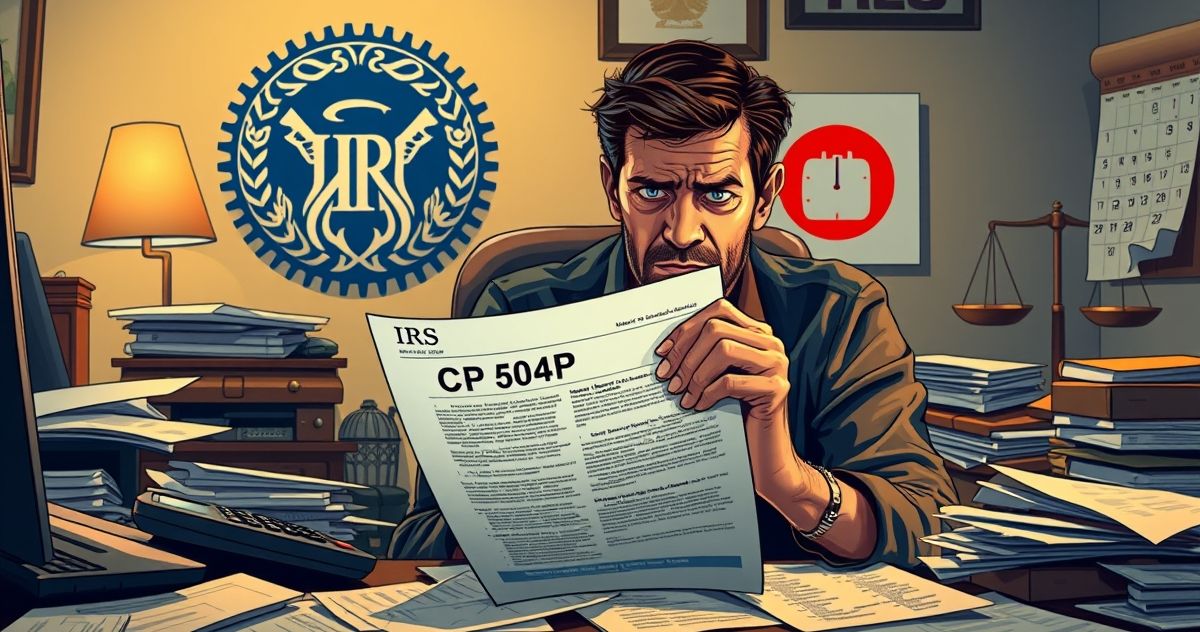Understanding the CP504P Notice: A Comprehensive Tax Guide
The CP504P Notice is a crucial document issued by the Internal Revenue Service (IRS), often regarded as a final reminder to taxpayers who have outstanding tax liabilities. If you are a recipient of this notice, it is important to understand its implications, requirements, and the necessary actions to take in order to mitigate further consequences such as tax levies or concurrent penalties.
What is the CP504P Notice and Its Primary Purpose?
The CP504P Notice, essentially a Notice of Intent to Levy, is sent to inform taxpayers that they have unpaid tax balances from previous filings. This document signifies that the IRS intends to levy, which means they can seize property or garnish wages to satisfy the outstanding debt. It is one of multiple notifications sent by the IRS during the tax collection process and carries significant weight regarding its urgency.
Key Features of the CP504P Notice
- Due Amounts: The notice explicitly lists the amount owed by the taxpayer, which includes not only the initial unpaid tax balance but also any accumulated penalties and interest.
- Finality: The CP504P is often considered a final notice before the IRS proceeds with levy actions, making it crucial for recipients to act promptly.
- Notification of Intent to Levy: The notice clarifies that the IRS is planning to proceed with property seizure if debts remain unresolved, providing a 30-day window for response or appeal.
- Collection of Social Security Benefits: It mentions that the IRS can potentially levy social security benefits if other assets or income sources are unavailable.
Relevant Filing or Compliance Requirements
Upon receiving a CP504P Notice, taxpayers must understand their compliance obligations. Primarily, they need to:
- Pay the Amount Owed: The simplest resolution is to pay the outstanding balance in full, which can be done online through the IRS website or via mailed check.
- Set Up Payment Plans: For those unable to pay in full, setting up an installment agreement with the IRS can prevent additional collection actions.
- Request a Collection Due Process Hearing: Taxpayers have the right to appeal the levy action if they disagree with the IRS’s determination by filing a request for a Collection Due Process (CDP) hearing.
- Submit an Offer in Compromise: If financial hardship is evident, an Offer in Compromise can be an option to settle the tax debt for less than the full amount owed.
Penalties or Consequences for Non-Compliance
Ignoring the CP504P Notice can lead to severe repercussions:
- Property Seizure: The IRS may levy assets including bank accounts, real estate, automobiles, or wages to settle the tax debt.
- Increased Penalties and Interest: Unpaid taxes continue to accrue additional penalties and compound interest, further inflating the total amount owed.
- Credit Impact: IRS levies can negatively affect a taxpayer’s credit score, hampering their ability to obtain loans or credit.
Importance of the CP504P Notice in Tax Resolution
The CP504P Notice plays a vital role in tax debt resolution by formally warning taxpayers of impending levy actions if they fail to respond appropriately. It serves as a critical juncture for taxpayers to address and resolve outstanding liabilities before severe collection measures are enforced. Furthermore, by understanding the notice thoroughly, taxpayers can take proactive steps to negotiate with the IRS, potentially reducing total liabilities and avoiding long-term financial consequences. Engaging with a tax professional upon receiving a CP504P can further aid in navigating the complexities of these processes, ensuring that all available options are considered.
Conclusion
The CP504P Notice is a pivotal correspondence in the IRS tax collection framework. As a formal declaration of outstanding debts and potential levies, it urges immediate taxpayer action to circumvent enforced collection activities. Comprehending the notice’s components, directions for compliance, and severe penalties for inaction empowers taxpayers to address their tax obligations efficiently, maintaining financial health and reducing the likelihood of detrimental outcomes.

